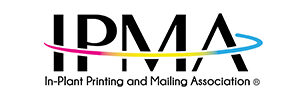I want to share some thoughts and observations that I believe you will find helpful as you think about the state of direct mail and where marketing and communication are headed.
MindFire is a marketing technology company that serves in-plants, printers, agencies, and other businesses, helping them grow brands, generate leads, and drive sales using OptiChannel Marketing & Selling.
For most B2B organizations, 2020 and the first half of 2021 were anything but easy. With face-to-face interaction all but extinct, those who managed to keep their doors open struggled to find and attract new customers.
But in the face of strong prevailing winds, the OptiChannel strategy proved essential for many companies. Our experience with the plan is personal, going far beyond the theoretical and into the hands-on, day-to-day application of this emerging marketing & sales process.
This new strategy has powered all MindFire’s marketing and sales since the start of 2020. The result? We experienced year-over-year growth in new client revenue of 118% and 43% more clients onboarded, despite the pandemic and struggling economy.
I want you to have that backdrop for understanding the impact of the strategy as we walk through how to understand what it is and its impact on your organization.
Let me start by defining OptiChannel and clarifying why it is imperative that modern in-plants, marketing, and sales organizations rapidly understand its consequences.
THE “SILENT” SHIFT IN CONSUMER BEHAVIOR
It may sound cliché, but indeed the world has changed. It is a change that seems deceptively simple, but it has profound implications on you as an in-plant and your parent organization.
The change is simply this: Where consumers place their attention (what I often call “hanging out”) has changed. But unfortunately, this change happens silently, often going undetected by most marketing and sales teams, because it’s not easy to see unless one knows where to look.
When these changes go undetected, we risk obsoletion in communicating with our clients and prospects because our organizations are not producing content for these new channels.
Thus, the first part of the OptiChannel strategy is recognizing these shifts in consumer behavior and realizing that producing content (correctly contextualized for reach location) is the easiest way for organizations to reach their goals.
Content must be posted not only in the locations that matter to today’s consumers but must be distributed daily. If that seems like a lot, consider these three trends that necessitate daily use, which not only applies to in-plants but any business.
First, prospects and customers are busier than ever. As a result, they do not respond to calls asking to meet and share new ideas.
Second, as much as you like to think that your customers remember all your capabilities, they do not. Instead, they place orders with outside organizations for services you can offer and have provided in the past.
Lastly, because of the growth of digital, customers (whether that is your parent organization or end-customers) may no longer view print as an innovative channel. As a result, they do not ask for your input on new, important projects for growth.
These trends impact your ability to generate new opportunities for your products & services. Producing content and sharing it daily on the channels and apps that matter is the fastest way to overcome these hurdles. And when done correctly and consistently over time, the results compound, leading to numerous benefits.
THE OPTICHANNEL FRAMEWORK
So how is the OptiChannel strategy executed? The framework is simple but requires focus and a willingness to iterate continually:
First, figure out how you or your organization best communicate. Where are your natural strengths? Is it text like blog posts or LinkedIn articles, audio like podcasts, or video? Assess your natural strength for communicating and commit to using that for articulating your message.
Next, get your intent right. Understand that the value you bring must align with the needs and interests of the customer, often having very little to do with your sometimes selfish desires. Therefore, your intent must focus on the needs of your audience, not yours.
Then, produce multiple pieces of content every day. Finally, contextualize the content for the specific platform you choose, whether Facebook, Instagram, Linked In, TikTok, and distribute this content in the places where there’s ample attention, at the lowest cost and highest impact.
Finally, learn to siphon. In OptiChannel terms, “siphoning” is the act of figuring out the strategies for taking the conversations that occur on these channels, engaging them properly, and bringing them in as leads. These techniques vary from platform to platform, from channel to channel. But they are critical to success.
These four steps form the basis for the OptiChannel framework.
THE OPPORTUNITY IS ENORMOUS
People sometimes make excuses when they see or hear this strategy, especially as it pertains to investing in digital platforms like LinkedIn to build their organization’s reach. They say, “I can’t do this,” or “It doesn’t make sense to me; why would my customers be on LinkedIn or TikTok?”
But those who ignore these platforms do so at great peril, and here is why:
If you (or your parent organization) invest today, it will pay dividends in the future. For example, LinkedIn has a vast organic reach right now. The platform is in a “content deficient” mode, meaning that it has more viewers than quality content to distribute. However, the platform is hungry for content, and if you know how to feed it, tremendous amounts of free organic reach may follow.
You might say, “We don’t have many followers on LinkedIn.” It doesn’t matter, at least right now. The key is to bring value to the consumer. When you create and distribute content with value, these digital platforms (like LinkedIn) will give you more reach, amplifying your message and feeding it to more viewers. When you deliver content of value to the viewer, you will find that your level of followers will grow as well.
Delivering value is the difference between a message that is such as: “Hire us! We print on Indigos!” to the creation of content that provides value like this: “7 Things You Need to Know When Picking Your Next Print Partner.” Which of these is likely to offer more value for the reader?
I know many of you employ direct mail for your parent organization. In no way am I suggesting you stop doing this! Let me clarify something: While I’m referring to digital often, I am not saying that you should exclude direct mail. That is not the point. Nor am I saying that you should do SMS instead of email or that you should do LinkedIn instead of Facebook.
What I am saying is this:
You must go where your market’s attention is right now. And that is when things start to change in a way that makes sense.
Focus on understanding where the attention is, then work backward. Be open-minded to what you discover. Perhaps the answer for you is direct mail coordinated with TikTok or Clubhouse.
Maybe it’s direct mail synchronized with LinkedIn.
The key is this: Do not get married to the channel. Instead, get married to where your customers are. That’s what matters.
WHY YOU NEED TO ACT NOW
The internet will remove all the middle operators between your product and the customer by its very nature. The only thing left is how, when, and where you communicate with them.
That’s why the basic tenet of OptiChannel is about finding where your market “hangs out,” so you can reverse engineer to where their attention is right now. Then, use contextualized content to engage them, and orchestrate meaningful interactions and conversations across the small handful of channels that matter. Finally, do this at scale, applying what you learn to refine and repeat the process.
Optichannel is a topic and a strategy I am passionate about. We are honored to be at the forefront of this movement, shepherding a community of companies, big and small, adopting this mindset. I’d love to hear from you at david.rosendahl@mindfireinc.com should the OptiChannel movement inspire you to consider a change. Happy to answer any questions!

David is the president & co-founder of MindFire, a two-time Inc500 award-winning software company. Commercial printers, agencies, & brands like BMW, Microsoft, Harvard, Facebook, & 15,000+ other companies grow their leads & sales with MindFire’s unique marketing platform that finds & engages clients using direct mail, email, & social.
